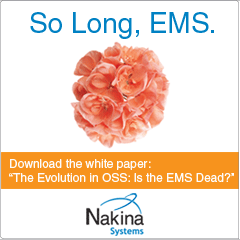|
|

By Tim Young
There was a time when it was pretty simple. String some wires. Put a switchboard in the middle to route calls. Presto. You’ve got a telephone network. There weren’t really any options for customers on which network to select, and calling outside of North America prior to the TAT cables generally proved difficult and expensive. However, things have changed for the better. More choice. Worldwide networks. The customer never had so many options. But what about the service providers? Unless you’ve built a massive, worldwide network, there are some Virtual Network Operators (VNOs) who think that they have a formula for success for you.
In the simplest terms, VNOs are service providers that do not own their own infrastructures. VNOs rely on a network of arrangements to support network access. They do all the dirty work necessary to maximize points of presence within a network to facilitate more visibility within a network than might be possible through other means. VNOs generally own their own network operation centers and project management resources, but no actual PoPs, backbones, or tail circuits.
There aren’t a particularly large number of VNOs. There’s Vanco, Sirocom, and TFM Networks in the UK, Virtela in the US, XB Networks in the Netherlands, and after Mercator Partners acquired and merged Global Internetworking, Inc. and European Telecommunications & Technology Limited, a new company called Global Telecom and Technology (GTT). There are surely others, and the definition of the grouping is somewhat nebulous at times, as the only major criteria is the lack of infrastructure ownership.
So why work with VNOs? One reason could be the lack of other viable options. “It is economically impossible for an asset-based carrier to meet the in-country needs of a broadly spread global enterprise and their international requirements,” says Alan Timpany, CEO of Vanco. “Shell Petroleum has over 2,000 telecoms agreements around the world. I think this means the industry has failed them.” Many industry experts see VNOs as the path to simplification, or at least a shift of burden from the traditional carriers to the VNOs. Vanco has been trumpeting its ability to even further simplify the process for service providers by announcing its NetDirect product. The product is essentially a search engine that allows providers to search a given area for available network resources, compare costs, and select the best network for the customer. The tool really makes the process easier and more comfortable, but is it enough to maintain demand for VNO services?
|
|
"With a great deal of cost being required by the circuit, the shorter distance information has to travel, the better the price." |
|

Virtual Network Operators win over facilities-based carriers in terms of flexibility, as they are not bound by a preference for their own network assets. NPRG Analyst Terry Barnich equates VNOs with the Dutch of the 17th century. “The Dutch sold hulls and ships to all competing parties, Portugal, Spain, France, and England, and made Gilders hand over fist.” The absence of allegiance to any carrier allows VNOs to sell to all, ultimately creating a ridiculously profitable scenario. In fact, when Alan Timpany bought Vanco for one pound in 1988, the company was an unprofitable data-service company. Now, Timpany claims revenue that approaches three-quarters of a billion dollars. Likewise, Global Internetworking posted a 200% revenue growth between 2001 and 2005, prior to its acquisition by Mercator.

And it isn’t just stockholders who are crowing. Service Providers appreciate the service as well. According to Eric Legault of Bell Canada, which has been vocal in its support of Vanco and their NetDirect service, there are several obvious benefits to using a VNO. The first, and arguably most important, is certainly price. With a great deal of cost being required by the circuit, the shorter distance information has to travel, the better the price. Another reason, according to Legault, is that you can get much more granular on the QoS. “In an IP world, as opposed to layer 2, a packet that travels among MPLS cloud is not treated as a second class citizen. The core network doesn’t regard the packet as either coming from a wholly owned ILEC or coming from another carrier. It’s treated the same way. Therefore, it is given the same attention and core availability as everything else, so why worry?”
|
|
|
 |
 |
|




